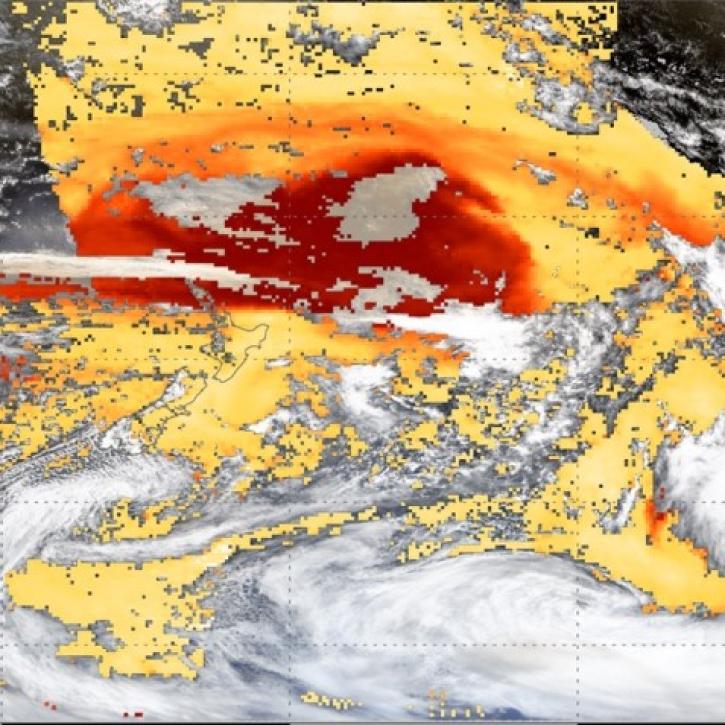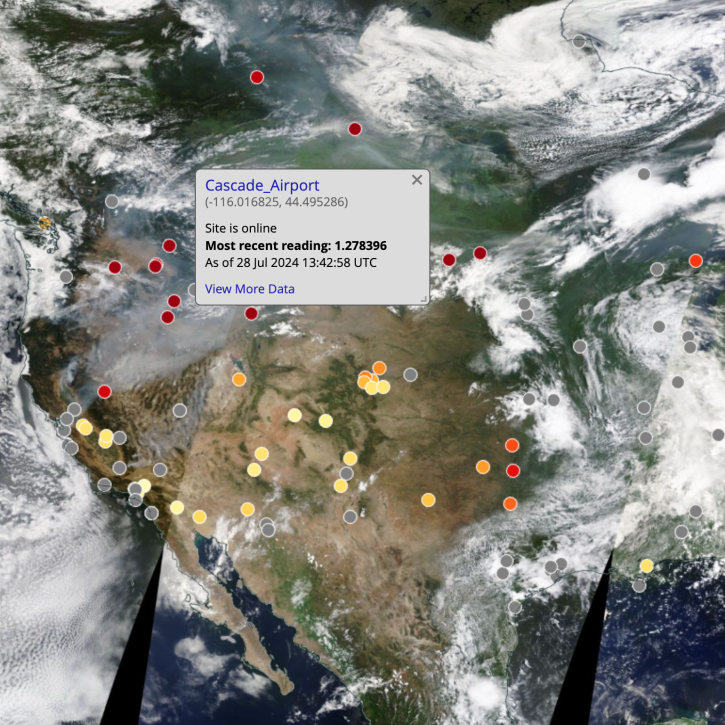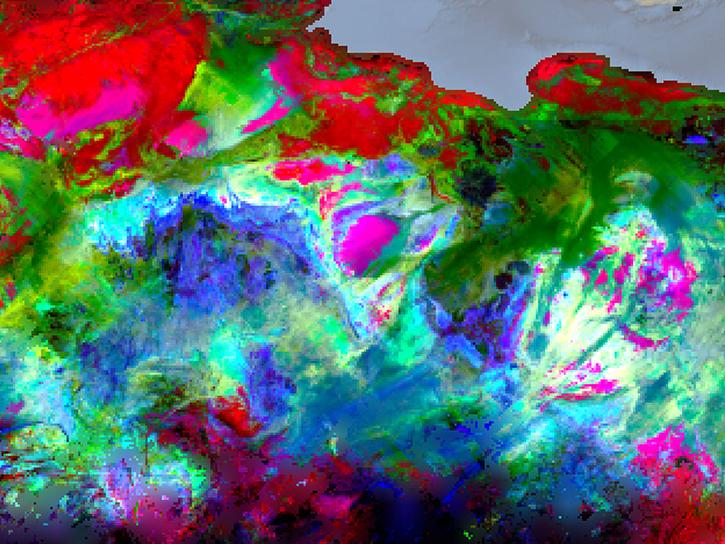Access a range of datasets and data tools to further your research.
Aerosols are tiny particles suspended in Earth's atmosphere. There are two main types of aerosols: primary aerosols, such as sea spray, mineral dust, smoke, and ash, which become part of the atmosphere organically through natural processes. Secondary aerosols, such as sulfate aerosols from volcanoes or industrial emissions, undergo chemical changes when introduced into the atmosphere that result in new aerosol particles becoming part of the atmospheric makeup. All aerosols have the potential to affect public health as well as impact climate, weather, and ecology.
NASA instruments monitor many aspects of aerosols, including aerosol optical depth and thickness, aerosol index, and the movement and effect of dust, ash, and smoke. Data products including the Deep Blue (DB) Aerosol and Dark Target (DT) Aerosol products derived from the Visible Infrared Imaging Radiometer Suite (VIIRS) instruments and the Moderate Resolution Imaging Spectroradiometer (MODIS) Aerosol Product provide essential information about ambient aerosol optical thickness across the continents and the global ocean.
These data help characterize the chemical makeup of atmospheric aerosols and better understand where air pollution is most prevalent, helping local communities make science-informed decisions to support public health.
Learn How to Use Aerosols Data





Join Our Community of NASA Data Users
While NASA data are openly available without restriction, an Earthdata Login is required to download data and to use some tools with full functionality.
Learn About the Benefits of Earthdata LoginFrequently Asked Questions
Earthdata Forum
Our online forum provides a space for users to browse thousands of FAQs about research needs, data, and data applications. You can also submit new questions for our experts to answer.
Submit Questions to Earthdata Forumand View Expert Responses